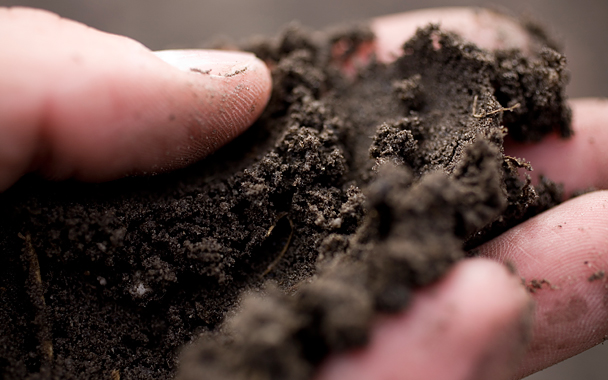Years ago, I wrote a snapshot of Sang Lee Farms, located out on the North Fork of Long Island. The Lee family grows some of the lushest Asian greens around. Standing in a field of bok choy with farmer Fred Lee, I asked him to tell me the secret of his perfect produce. He bent down, grabbed a handful of soil, and passed his magic on in two words: “sandy loam.”
Ask anybody who grows vegetables and they’ll give you some variation on Fred Lee’s answer—it usually comes down to soil. So the first lesson I learned as my garden mate, Stephen Nocera, and I were about to break ground in our weedy plot last year was: If you don’t test your soil, don’t add compost and fertilizer, don’t work it, then you won’t pass Go, not to mention collect a bushel of big, fat, flavorful tomatoes. Amending your soil is probably the most labor-intensive and most essential part of gardening. But it’s like practicing your musical scales: You want to play Haydn? Clam up and work the scales. You want to grow great vegetables? Get out there and dig.
Second lesson: Location, location, location. Give your garden a good home. Make sure it’s a well-drained, sunny space (at least six hours of sun a day); and keep it as small, manageable (do you really need 20 pepper plants?), and close to your kitchen as possible. (Community gardeners, just pretend there’s a kitchen nearby.) Then get to know your soil.
Volumes and volumes are devoted to soil science, and this is a wee column. But here is the bare minimum you need to know.
There are three main types of soil, based on the rock from which it’s formed:
Sandy soil has a granite or sandstone base and a looser texture than clay soil, which allows air and water to circulate more easily. Sandy soil is also more acid.
Clay soil has a limestone base and is more compact and more alkaline.
Loam is the golden mean between the two above, and has a texture that is neither too fine nor too coarse. If it’s on the sandier side or the more claylike side of the perfect balance, it’s called sandy loam (like Fred Lee’s) or clay loam.
In our garden dreams we all have loam (lucky Lee), but in our garden reality we usually have a sandy or clay soil. To determine which you have, perform a hand test, outlined on the University of Minnesota’s website. The Tilly Foster Community Garden is blessed (ahem) with dense clay soil, so we had to work it intensely with shovels and spades early last season (tip for a better back: rent a rototiller), pulling out weeds by the roots and then breaking up the clods of dirt and turning our whole plot.
Next we tested the soil pH to determine how acid or alkaline it was. A slightly acid pH of around 6.3 to 6.8 is desirable for most vegetables, and a more acid soil (pH below 6.0) works for fruits like blueberries. Stephen, being a professional, had a pH test kit at the ready. But if you don’t have a Stephen, consult your local branch of the USDA Cooperative State Research, Education, and Extension Service. For a small fee, the Extension Service will test your soil sample and provide you with an analysis and pH results. Or you can purchase a home testing kit at most garden shops.
Now, to correct your pH. For soil that is too alkaline, you’ll add sulphur, and to neutralize acid soil, you’ll add lime. Consult with the cooperative extension rep, your local greenhouse, or one of the books below for proper proportions.
After you’ve sited the garden and tested your soil, you’ll need to work in some organic matter—that is, compost and fertilizer—to improve the soil’s texture (making clay soils looser and sandy soils more able to hold moisture) and to correct its balance of nitrogen, phosphorus, and potassium. You can buy compost or make your own, but keep in mind that it takes a while for homemade compost to be ready to use. And this organic matter should be applied not once but throughout the season (kind of like shampooing: lather, rinse, repeat).
And once all that is done, it’s time to create your garden plan and plant your seeds and seedlings. That’s next week’s column, so begin thinking about what you like to cook, and the garden plan will practically invent itself.
The Garden Bookshelf
I feel a bit like Sandra Bernhard in Without You I’m Nothing. Without a good garden guide, I’d be sunk. In addition to Stephen, I lean heavily on the written advice of Mel Bartholomew, author of Square Foot Gardening (see below), and a 1936 edition of The Garden Encyclopedia, which weighs a ton and is a garden geek’s dream. For words of wisdom and solid advice from the garden masters, get your hands on at least one of the books on this list:
All New Square Foot Gardening by Mel Bartholomew (Cool Springs Press 2006)
Rodale’s Ultimate Encyclopedia of Organic Gardening: The Indispensable Green Resource for Every Gardener by Fern Marshall Bradley (Editor), Barbara Ellis (Editor), Ellen Phillips (Editor) (Rodale 2009)
New Organic Grower by Eliot Coleman (Chelsea Green 1995)
Four-Season Harvest: Organic Vegetables from Your Home Garden All Year Long by Eliot Colman and Barbara Damrosch (Chelsea Green 1999)
Heirloom Vegetable Gardening: A Master’s Guide to Planting, Seed Saving, and Cultural History by William Woys Weaver (BookSales 2003)

